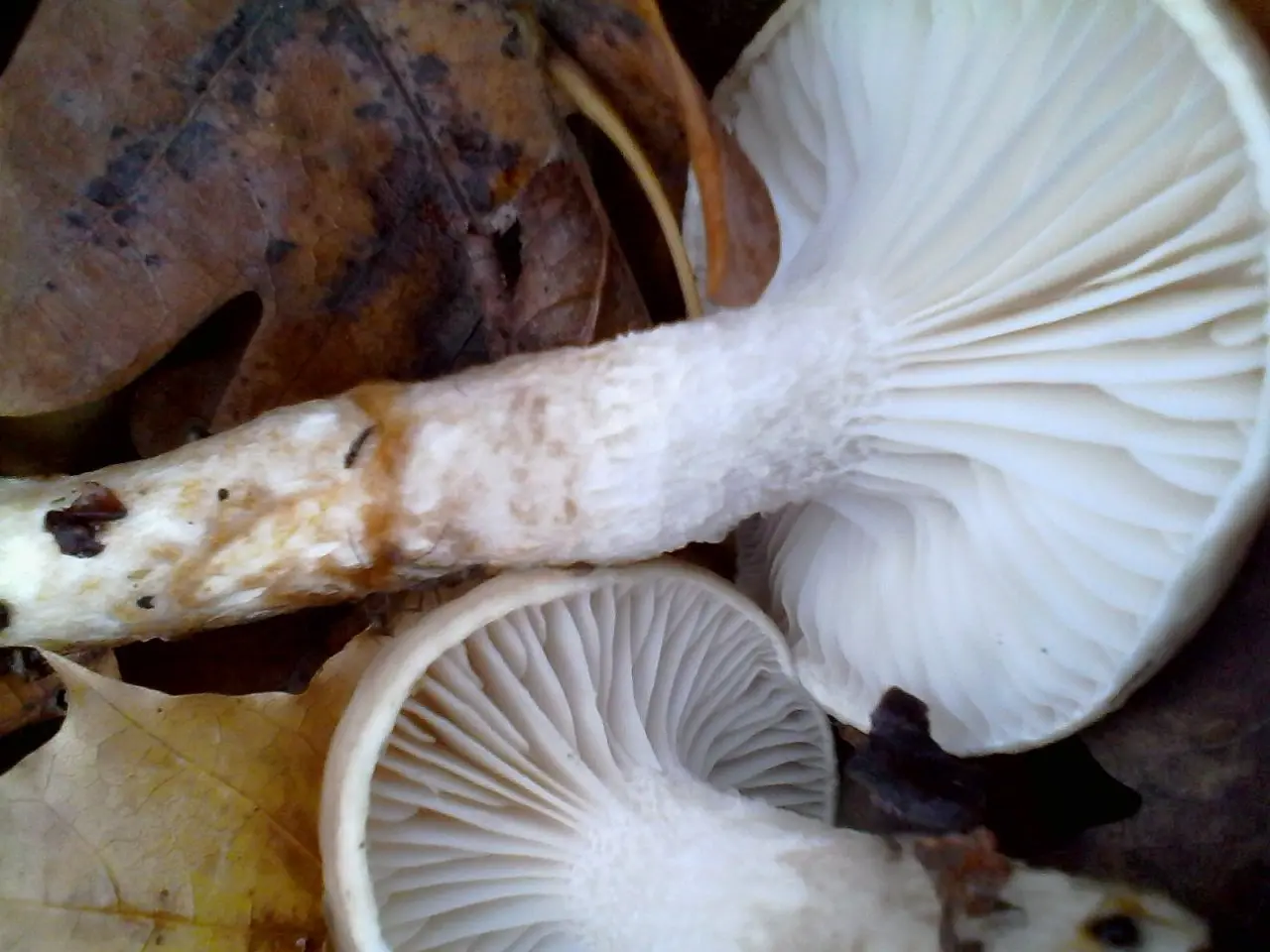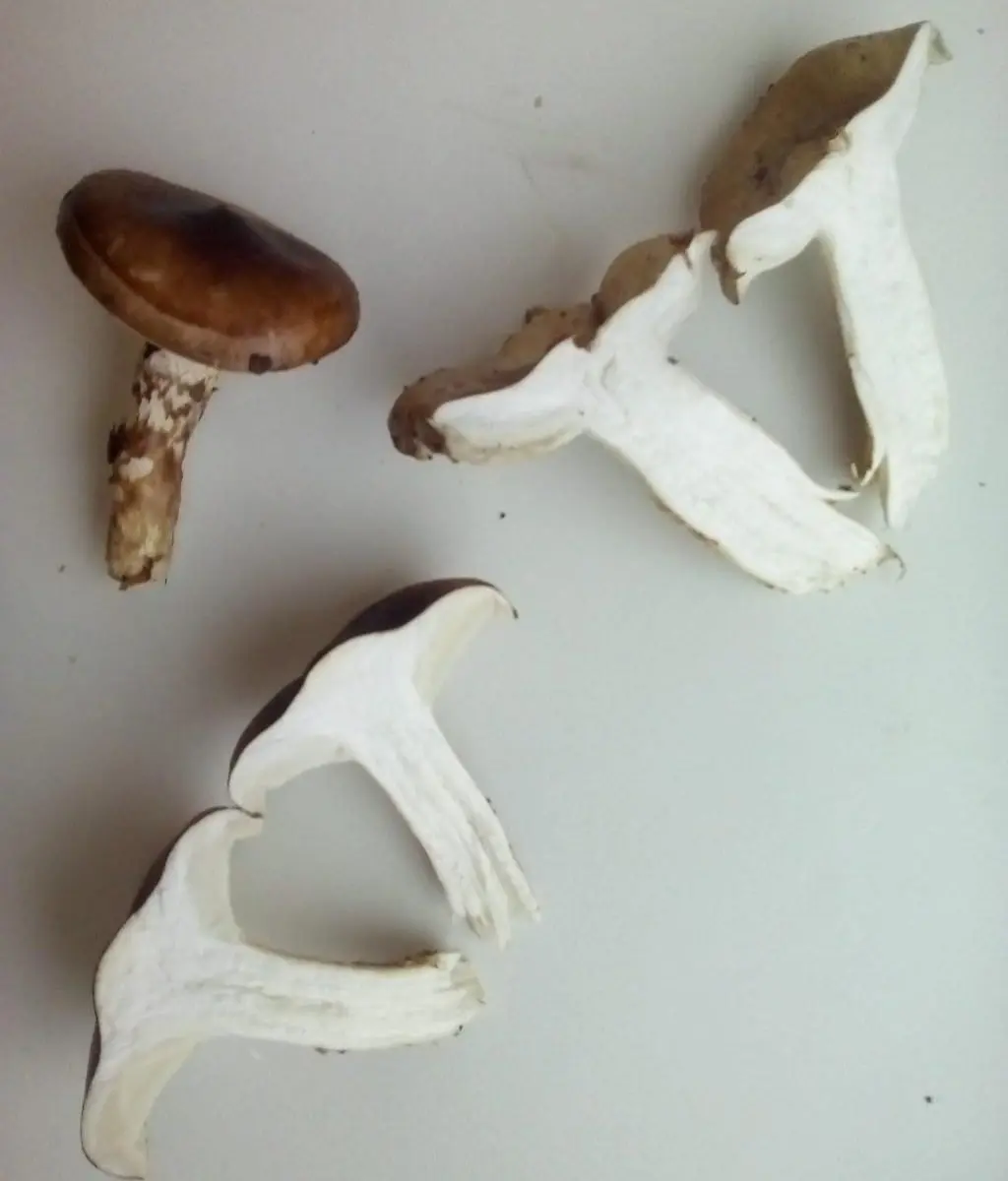Hygrophorus persoonii (Hygrophorus persoonii)
- Division: Basidiomycota (Basidiomycetes)
- Subdivision: Agaricomycotina (Agaricomycetes)
- Class: Agaricomycetes (Agaricomycetes)
- Subclass: Agaricomycetidae (Agaricomycetes)
- Order: Agaricales (Agaric or Lamellar)
- Family: Hygrophoraceae (Hygrophoraceae)
- Genus: Hygrophorus
- Type: Hygrophorus persoonii (Hygrophorus Persona)
:
- Agaricus limacinus
- Hygrophorus dichrous
- Hygrophorus dichrous var. dark brown

head: 3-7(8), rarely up to 10 cm in diameter, at first obtuse-conical or hemispherical with a tucked edge, later becomes prostrate, almost flat in the center with a low blunt tubercle. Not hygrophanous, the surface is very slimy. Initially dark, brown, gray, olive or yellowish-brown with a dark center, later brightens, especially along the edges, to gray or olive-brown, sometimes to light ocher, but with an olive tint, but remains dark in the center .
Records: from widely adherent to slightly decurrent, thick, sparse, first white, then light yellow-green.
Leg: Height from 4 to 10 (12) cm, diameter 0,6-1,5 (1,7) cm, cylindrical, slightly narrowed at the base.

The upper part of the stem is at first thin, white, dry, then gray-green, granular, below it is colored like a hat – from ocher to light brown, very slimy. As they grow, belts appear: from olive to grayish-brown in color. The stem becomes slightly fibrous with age.
Pulp: The pulp is thick and dense, white, slightly greenish closer to the top of the cap.
Odor: Weak, indefinite, may be slightly fruity.
Taste: sweetish.

spore powder: white, spores 9-12 (13,5) × 6,5-7,5 (8) µm ovoid, smooth.
Chemical reactions: the following reaction occurs with a solution of ammonia or KOH: the surface of the cap becomes blue-green.
It grows in broad-leaved forests, forms mycorrhiza with oak, and is also found in beech and hornbeam forests. Grows in small groups. Season: August-November.
The species is rare, found in Europe, Asia, the North Caucasus, in Our Country – in the Penza, Sverdlovsk regions, the Far East and Primorsky Krai, the distribution area is most likely much wider, there is no exact data.
The mushroom is edible.
Hygrophorus olivaceoalbus (Hygrophor olive white) – found in mixed forests, more often with spruce and pine, has a smaller size
Hygrophorus korhonenii (Korhonen’s Hygrophorus) – a hat less slimy, striped, grows in spruce forests.
Hygrophorus latitabundus grows in warm pine forests in the lowlands and low parts of the mountains.
Photos used in the article: Alexey, Ivan, Dani, Evgeny, as well as photos of other users from questions in recognition.









